Harper Lee’s newly found stories show her ‘genius’, say her family

Katie RazzallCulture and Media Editor
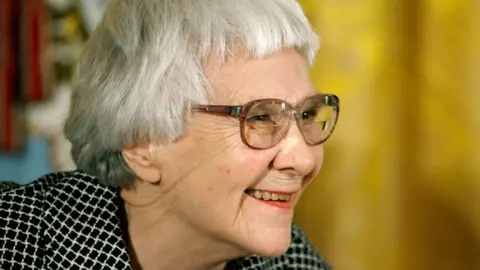 Getty Images
Getty ImagesMolly Lee is talking to me about the tales her aunt Nelle, known to the world as Harper Lee, would weave for her when she was a little girl. “She was just a great storyteller,” says the 77-year-old from her home in Alabama.
That’s an understatement if the success of Harper Lee’s Pulitzer-prize winning novel To Kill A Mockingbird is anything to go by. Since its publication in 1960, when it was an instant hit, the book has sold more than 42 million copies worldwide
Based around the story of Tom Robinson, a black man falsely accused of rape, it’s told through the eyes of two white children, Jean Louise ‘Scout’ Finch and her brother Jem – and is often described as an American classic.
But at the point Molly is describing, before the world had heard of Lee, she was simply an aunt enchanting her niece with stories, often by riffing on one of her favourite authors, the British novelist Daphne Du Maurier.
“The stories that she told me, she would make them up but they all seemed to be based around, ‘It was a dark and stormy night’… It seemed to me they were always on the moor and she would just take me into the dark,” Molly says.
Molly’s cousin is 77-year-old Ed Lee Conner. His earliest memories of his aunt date back to the late 1940s, when he was tiny. “She sang to me in a way that was very funny,” he recalls. “And I laughed.”
He gives me a rendition, half-singing I’ve Got a Little List from the musical The Mikado. Ed says he only realised much later that “she was singing to me songs from Gilbert and Sullivan”, the Victorian-era duo Lee “adored” all her life.
It seems some of Lee’s influences were British, even if her roots were in Monroeville, Alabama at a time of strict segregation, when schools, churches and restaurants were divided on race lines.
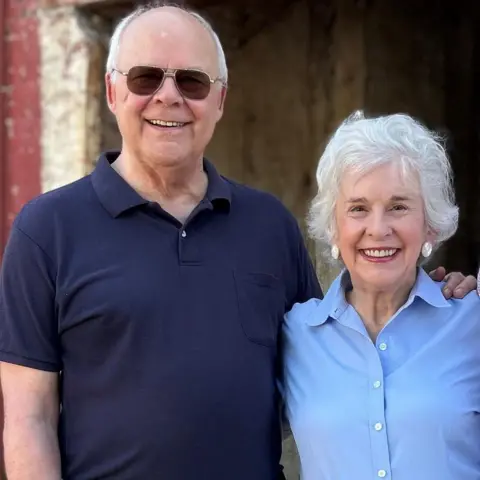 Casey Cep
Casey CepThe cousins are sharing their memories of their aunt – who died in 2016 – on the eve of the publication of a new book, The Land of Sweet Forever.
It’s a series of newly discovered short stories Lee wrote in the years before Mockingbird, as well as previously published essays and magazine pieces.
Ed explains: “I knew there were unpublished stories, I had no idea where the manuscripts of those stories were.”
They were discovered in one of his aunt’s New York City apartments after she died, a time capsule from the start of Lee’s career which help explain how a young woman from Alabama became a best-selling author whose work addressed the turbulent issues of her age.
Molly is “very pleased” that the stories have been found. “I think it’s interesting to see how her writing evolved and how she worked on her craft,” she says. “Even I can tell how she improved.”
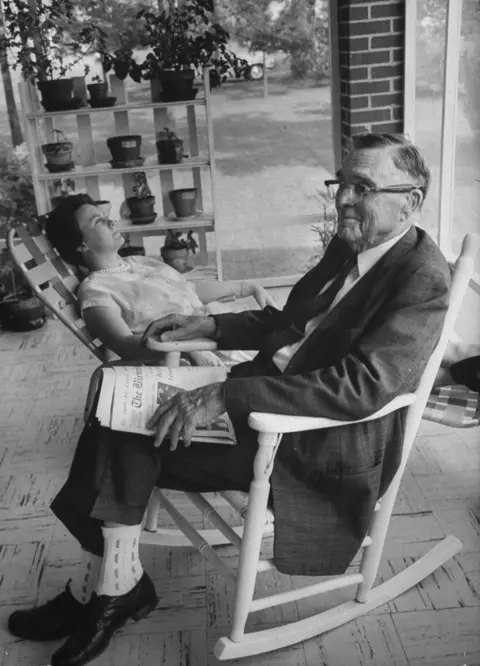 Getty Images
Getty ImagesSome elements will be familiar to fans of To Kill A Mockingbird.
Versions of Jean Louise Finch appear, although she hasn’t gained her nickname Scout yet.
In one of the stories, The Pinking Shears, the character is a spirited little girl called Jean Louie who gives a friend a haircut and faces the wrath of the child’s father. Perhaps a hint of the forthright Scout to come?
In another, The Binoculars, a child starting school is berated by the teacher for already knowing how to read. A version of that story appears early on in Mockingbird.
Some of them are set in Maycomb, Alabama, the fictional town which also stands for Monroeville in To Kill A Mockingbird.
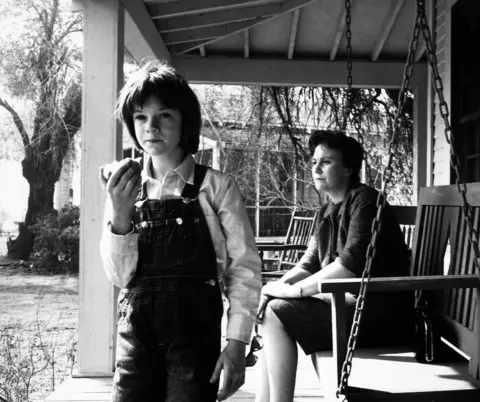 Getty Images
Getty ImagesEd, who’s a retired English professor, calls them “apprentice stories” which aren’t “the fullest expression of her genius and yet there’s genius in them”.
“She was a brilliant writer in the making and you see something of her brilliance in these stories.”
I found one, The Cat’s Meow, an unsettling read through a modern lens. Set in Maycomb, it sees two siblings, clearly Lee and her older sister Alice, confounded by her sister’s black gardener Arthur, who’s from the North but has apparently decided to work in the segregationist South. The older sister tells the younger one he’s a “Yankee” who has “as much education as you have”.
Written in 1957, seven years before the groundbreaking Civil Rights Act of 1964, Lee’s own approach to the civil rights movement appears to be evolving.
Some of the language in the story and at times, even the narrator’s own attitudes, are uncomfortable to read.
Ed thinks that’s a “fair assessment”
He points to Go Set A Watchman, the novel Lee published just a year before she died after the manuscript was found decades after she wrote it.
As liberal as the narrator thinks she is, “she’s not entirely liberated from her own prejudices, let’s put it that way”, Ed says.
“And I don’t say that in any demeaning sense because for white southerners, it’s not easy to rid ourselves of all the prejudices that we have born over the centuries.”
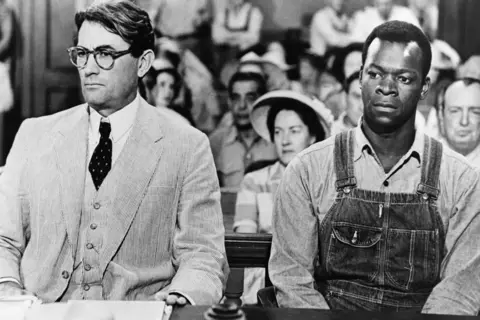 Getty Images
Getty ImagesThe publication of Go Set A Watchman sparked controversy. Atticus Finch, the anti-racist hero of To Kill A Mockingbird, is portrayed as a racist.
There were questions about whether Lee, who had significant health issues by then, had the capacity to give full consent. (An investigation by the state of Alabama found claims of elder abuse were unfounded).
I ask whether it’s an invasion of Lee’s privacy to publish posthumously these stories that Lee didn’t choose to make public in her lifetime. Ed Lee Conner is clear that, when it comes to The Land of Sweet Forever, “that’s an easy judgment to make, she attempted to publish all these stories”.
And he believes – like Mockingbird – the stories have something to say about modern race relations in the US which is “part of the continuing relevance of what she wrote”.
To Kill A Mockingbird “had a huge influence on the way a lot of people thought about race relations in the United States”.
Writing a book about a black man’s struggle that’s centred on white characters, particularly Atticus Finch, the white lawyer played by Gregory Peck in the 1962 film, has led, in later years, to accusations of white saviourism.
Ed tells me his aunt “was writing a novel primarily for a white audience who I think would need to see a figure like Atticus Finch much more clearly and much more humanly in their lives, even as a fictional character, in order to influence them as much as she could”.
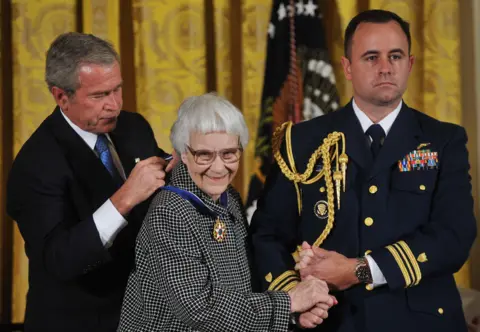 Getty Images
Getty ImagesIn an interview in 1964 for the New York radio station WQXR, Harper Lee described the “sheer numbness” she felt at the reaction to her debut novel.
“I never expected that the book would sell in the first place,” she said. “I was hoping for a quick and merciful death at the hands of the reviewers. I was hoping that maybe somebody might like it well enough to give me some encouragement about it.”
Ed’s side of the family had been given it in proof, ahead of publication. At age 13, he read the whole book in two days. “I was absolutely enthralled and it was one of the highlights of my youth.”
He says the whole family shared her feelings of numbness at its reception. “We all loved it and thought it was a terrific novel, but we had no idea… that it would go on to be as phenomenal a success as it was.”
Harper Lee had looked after Molly and her brother while she was writing it. “She was in her bedroom typing away and she locked the door and she’d come out and play with us and then go back to typing.”
When Molly read the book, as a 12-year-old, “I’m not sure that I ever looked up from it. I was totally engrossed.”
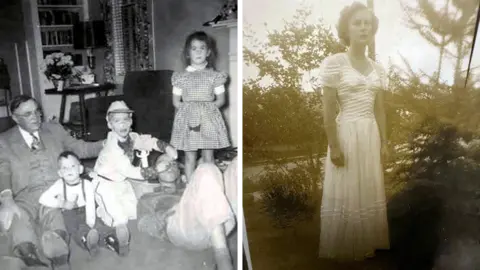 Dr Edwin Lee Conner/Harper Lee Estate
Dr Edwin Lee Conner/Harper Lee EstateI play them part of the WQXR interview that their aunt did four years after the book came out. It’s the only known recording of Harper Lee talking about To Kill A Mockingbird.
She retired from public life soon afterwards. Ed says she wasn’t a recluse as some have suggested and was very sociable with the people she knew. She’d simply realised, after the novel’s success and then the hugely popular film, that she didn’t need to promote it anymore.
“She did not particularly enjoy public appearances,” he recalls. “She had no interest whatsoever in being a celebrity. So there was a point at which she decided no more interviews.”
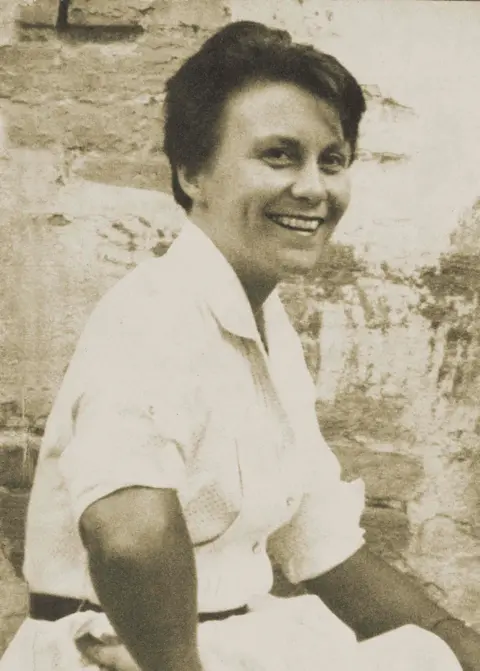 Michael Brown
Michael BrownListening to her speaking on this precious recording is its own time capsule.
In her soft southern accent, melodic and lilting, she talks not just about being numbed at the reaction to the book, but also why she believes the southern states are “a region of storytellers” and how she wants to be “a Jane Austen of South Alabama”.
Hearing her voice again “just makes me smile,” Molly says.
“I love hearing it,” agrees Ed, clearly moved. “It’s wonderful.”
The Land of Sweet Forever by Harper Lee is published on 21 October 2025.

